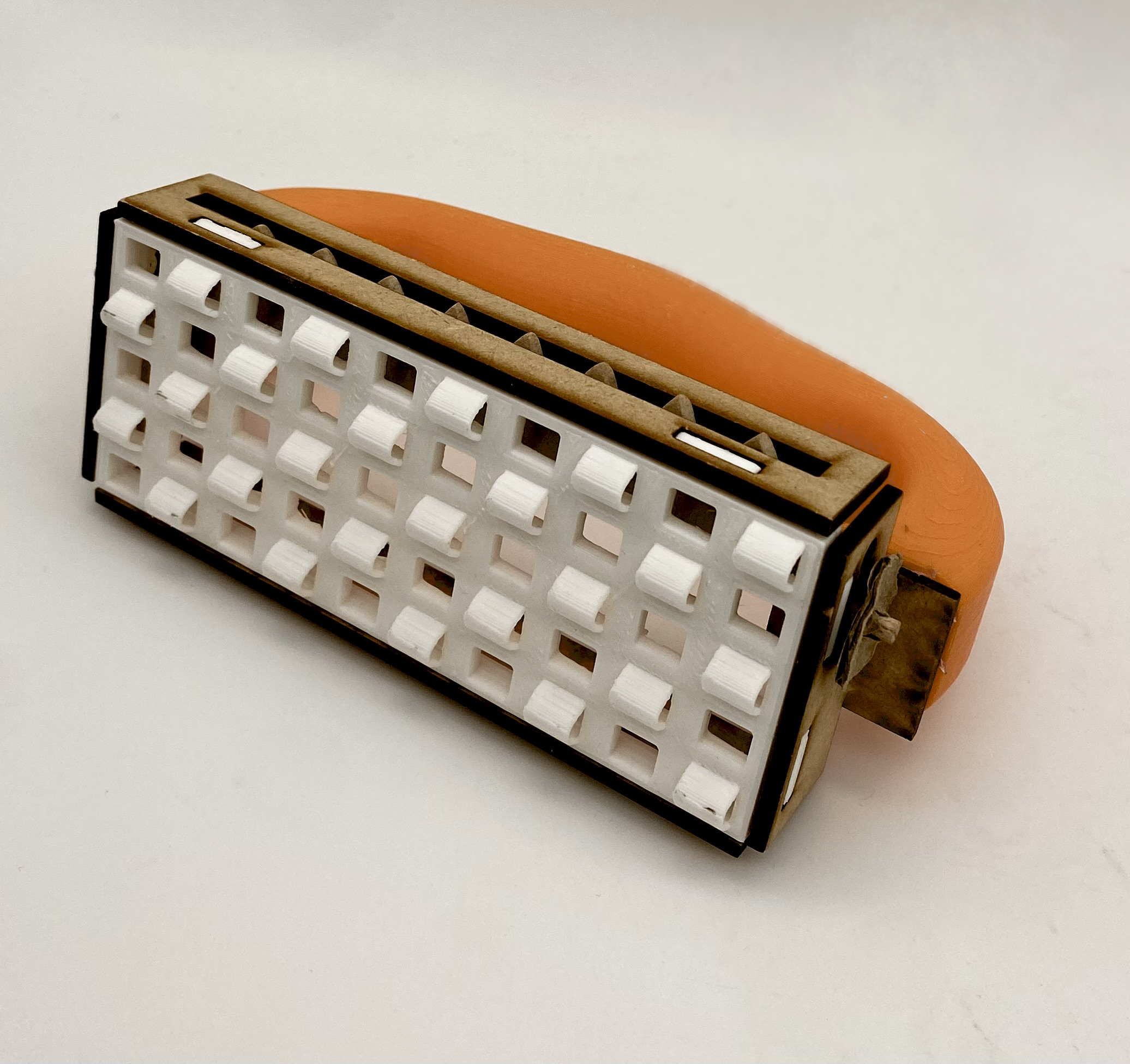
overview
I designed a model with a timing and hopping mechanism that allows it to elevate off the ground within a range of 8 seconds to one minute. For this assignment, we were given a list of materials that we were allowed to use to make our hopper.
First Prototype
For my first prototype, I focused on designing the timer mechanism, which used a rolling dowel to travel down a long zig-zag path and trigger the hopper. I carefully chose angles for the path, avoiding steep inclines to ensure that the dowel would take at least 8 seconds to reach the bottom. During testing, the dowel’s descent was inconsistent, so I was advised to use a thicker rod and fine-tune the angles to achieve a smoother roll.

second Prototype
After establishing a reliable timing mechanism, I moved on to designing the trigger and hopping mechanism, which involved using the dowel to knock something at the bottom to activate a torsion spring attached to a wooden panel. In my second prototype, I successfully incorporated the hopping mechanism with the torsion spring, but I faced difficulty connecting the timer trigger to the hopping mechanism.
The torsion spring, along with an MDF sheet and wooden rod, formed a system where the hopper would jump when a piece, bent by the spring, was released. However, I widened the zig-zag path to accommodate a thicker dowel, which caused it to travel too quickly—less than 8 seconds—something I planned to address in my final design.



FINAL PRODUCT
Compared to my previous prototypes, I made significant improvements to the aesthetics of my design, making it resemble a frog more closely. Instead of using an elastic band, as I had originally planned, I opted for a fence wire that I shaped into a hook. Using three wooden dowels, I created a fulcrum, beam, and latch system for the hook. The hook would latch onto the wooden latch, with the beam positioned directly underneath it.

I also modified the dowel’s path so that after traveling down for a few seconds, it would experience a sudden drop. This drop causes the dowel to hit the beam, which pulls the latch upwards and releases the hook. As a result, the hopping piece is triggered to hit the ground and cause the hopper to jump. During testing, the hopper successfully jumped at least 1 cm.
Fall 2022






